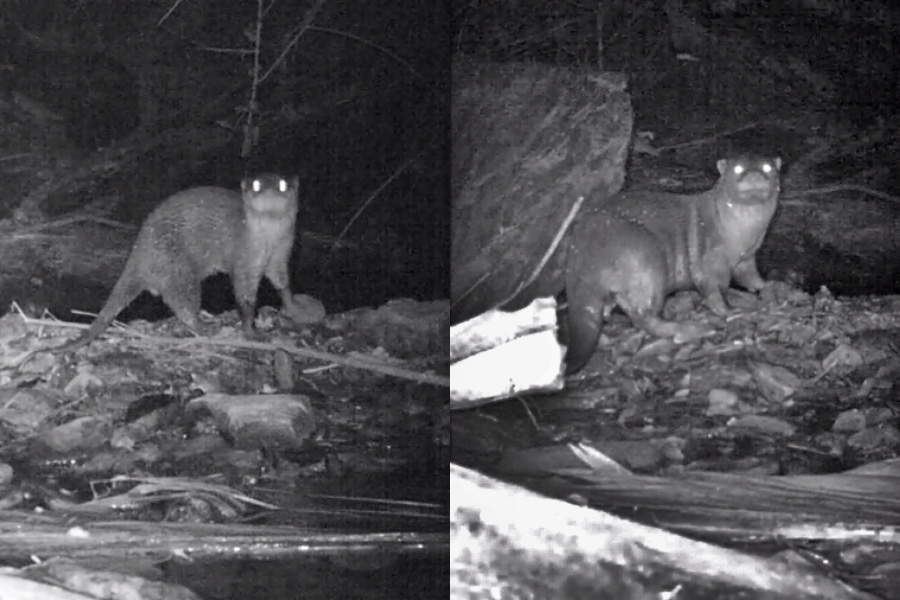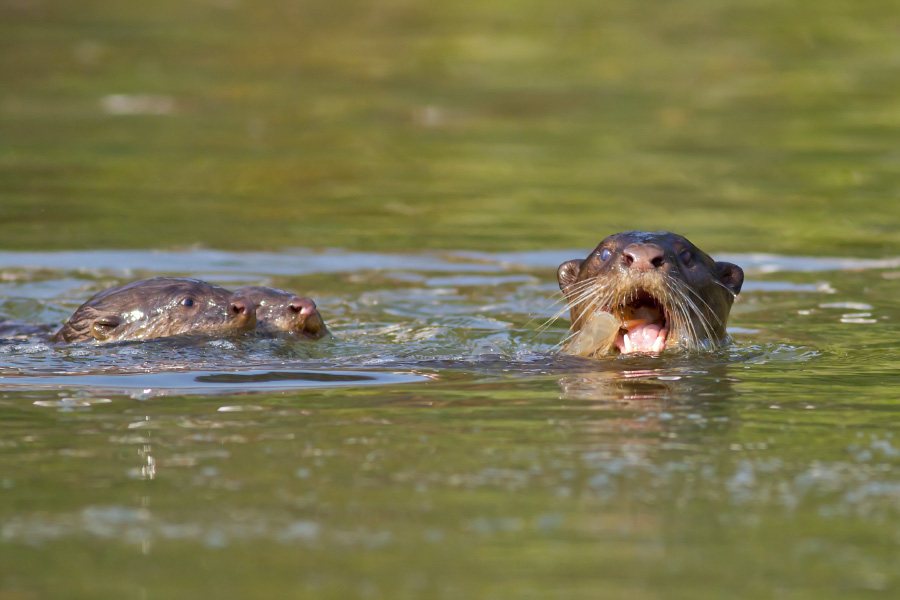Beaches and sunsets are what come to mind when most people think of Goa. This small state in western India has earned its reputation as one of the most favoured top tourist destinations. But very few know that Goa also has a rich diversity of flora and fauna. Much of the eastern rim of Goa falls within the Western Ghats (a global biodiversity hotspot). Goa has an area of 3,702 sq.km with several rivers spread across the state, all of which might have been home to otters at one point of time.
Otters are elusive semi-aquatic mammals that are equally comfortable on land and in water. Before the work by Wild Otters, next to nothing was known about them in Goa.
Our first step was to conduct scientific surveys across Goa to find occupancy, distribution and habitat preferences of otters in Goa. The field surveys were conducted from January 2015 to May 2015. Goa is home to two species of otters — the Smooth-coated otter (Lutrogale perspicillata) and Asian Small-clawed otter (Aonyx cinereus). Both species are classified as Vulnerable on the IUCN Red List.
We found smooth-coated otters in fresh as well as brackish water, with a majority of the population being outside protected areas. This highlights the need to integrate management of modified land uses with the management of protected areas in the landscape as emphasized by researchers previously (DeFries, Karanth & Pareeth, 2010). Smooth-coated otters have displayed great adaptability to survive in mangrove ecosystems alongside human dominated landscapes. Smooth-coated otter families of up to 15 individuals were recorded in the mangroves. The importance of village communities in conserving the wildlife around them is therefore crucial.
Asian small-clawed otters, on the other hand, were found only in fresh water. Flowing, rocky forest streams having a depth of 0.2 to 0.4 meters were their preferred habitat. Typically, their families were found to be small, with less than five individuals per family. Most Asian small-clawed otter populations were found inside protected areas in the Western Ghats. The lowest altitude at which their presence was recorded was 17 meters ASL. We mapped the otter conservation priority areas where conservation actions need to be focused to secure the future of otters in Goa.
During our work, we recorded the first-ever photographic evidence of sympatry between Asian small-clawed otters and smooth-coated otters.
Our team explored seven potential threats faced by otters. Habitat loss and fragmentation, with riverbank construction, high density of check dams, iron ore mining and sand mining posing a significant threat to otters. Fishing and solid waste being dumped in water bodies seemed to have minor impact on otters. Informal discussions indicated that poaching used to happen in the past; however, no recent instances of poaching were recorded, as observed by Prakash et al (2012).
Our project also involved creating awareness on otters to generate conservation support from village communities and the public. Awareness programs for fishermen were conducted on an individual basis or in small groups to ensure that personal attention was given to each fisherman. Otter T-shirts and stickers were given to fishermen to reduce animosity towards otters. The villagers were also shown footage of otters in their natural habitat, which helped us explain their importance in the ecosystem. Further, outreach programs were conducted in schools; awareness was also created through social media networking.
Posters and stickers were shared with forest department officials along with presentations on otters. Project findings were shared with relevant policy makers via reports. With otter populations fast disappearing we require more individuals to participate in efforts to conserve them locally and globally. Our team has been proactively working on building capacity for otter research and conservation. Since the inception of Wild Otters in September 2014, 54 individuals have been trained in otter ecology and survey techniques and we are looking to create and train the next generation of otter researchers and conservationists.
The Road Ahead
Currently our work in Goa is focused on otter conservation priority areas. We are now following otter families living alongside human settlements to get more insights into their behaviour and adaptation. This will help us understand their conservation needs better. Combining this knowledge with community work, we are working on building a community-based otter conservation model, which can run independently. We believe that the community living alongside otters is the key conservation stakeholder.
We now provide people opportunities to participate in this program. Contact us to know more about our work on otter conservation.
Acknowledgments
I would like to thank Mhadei Research Center, Conservation Leadership Program, IUCN/SSC Otter Specialist Group and Wildlife Conservation Society – India (WCS-India) for their support at different stages of our work.
References
- DeFries, R., Karanth, K.K. and Pareeth, S.J. 2010.Interactions between protected areas and their surroundings in human-dominated tropical landscapes. Biological Conservation 143: 2870-2880.
- Prakash, N., Mudappa, D., Shankar Raman, T. R., & Kumar, A. (2012).Conservation of the Asian small-clawed otter (Aonyxcinereus) in human-modified landscapes, Western Ghats, India. Tropical Conservation Science 5(1), 67-78. Retrieved from http://tropicalconservationscience.mongabay.com/content/v5/TCS-2012_mar_67-78_Prakash_et_al.pdf



 CI is a non-profit, non-commercial portal that aims to facilitate wildlife and nature conservation by providing reliable information and the tools needed to campaign effectively.
CI is a non-profit, non-commercial portal that aims to facilitate wildlife and nature conservation by providing reliable information and the tools needed to campaign effectively.